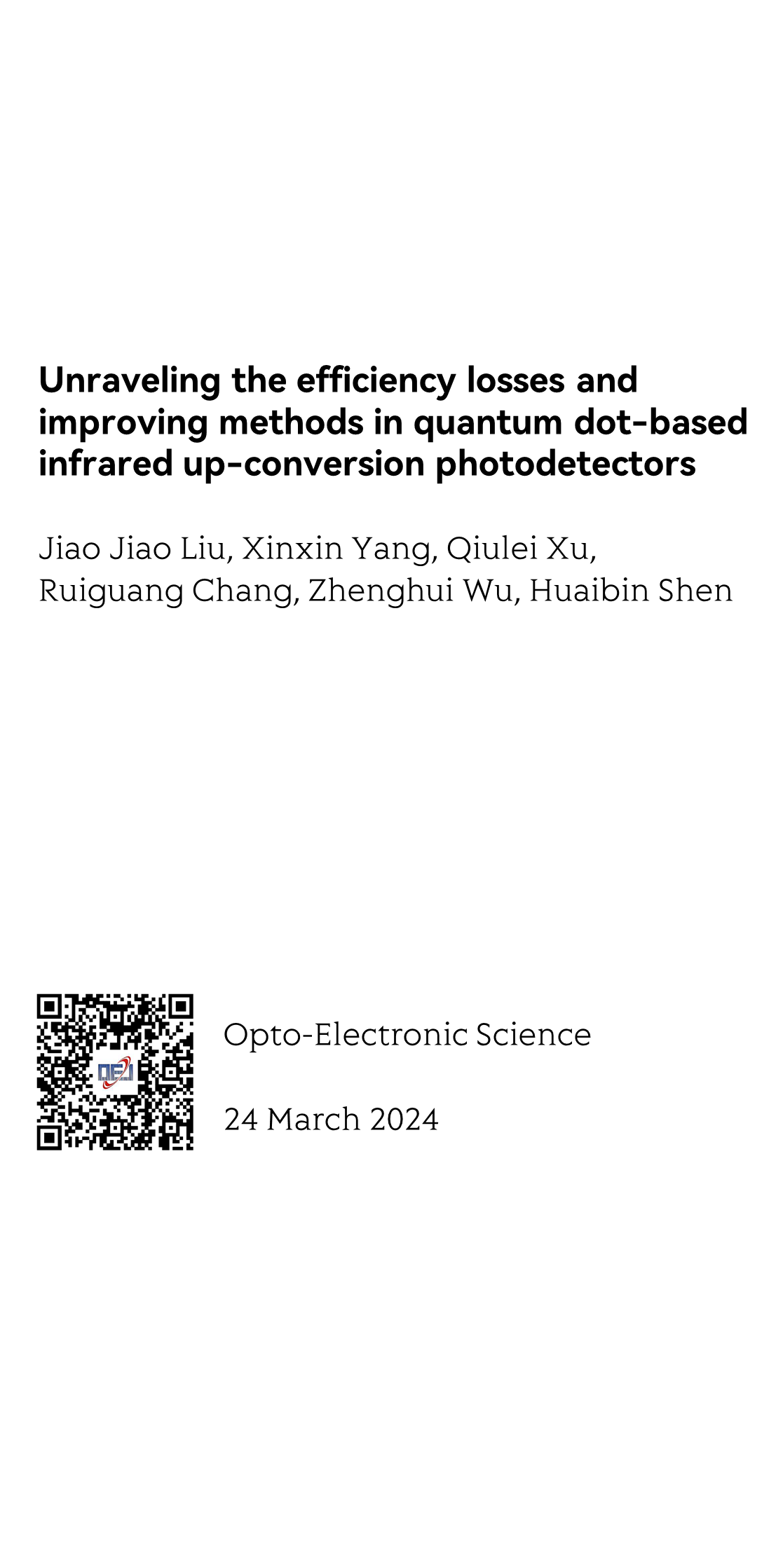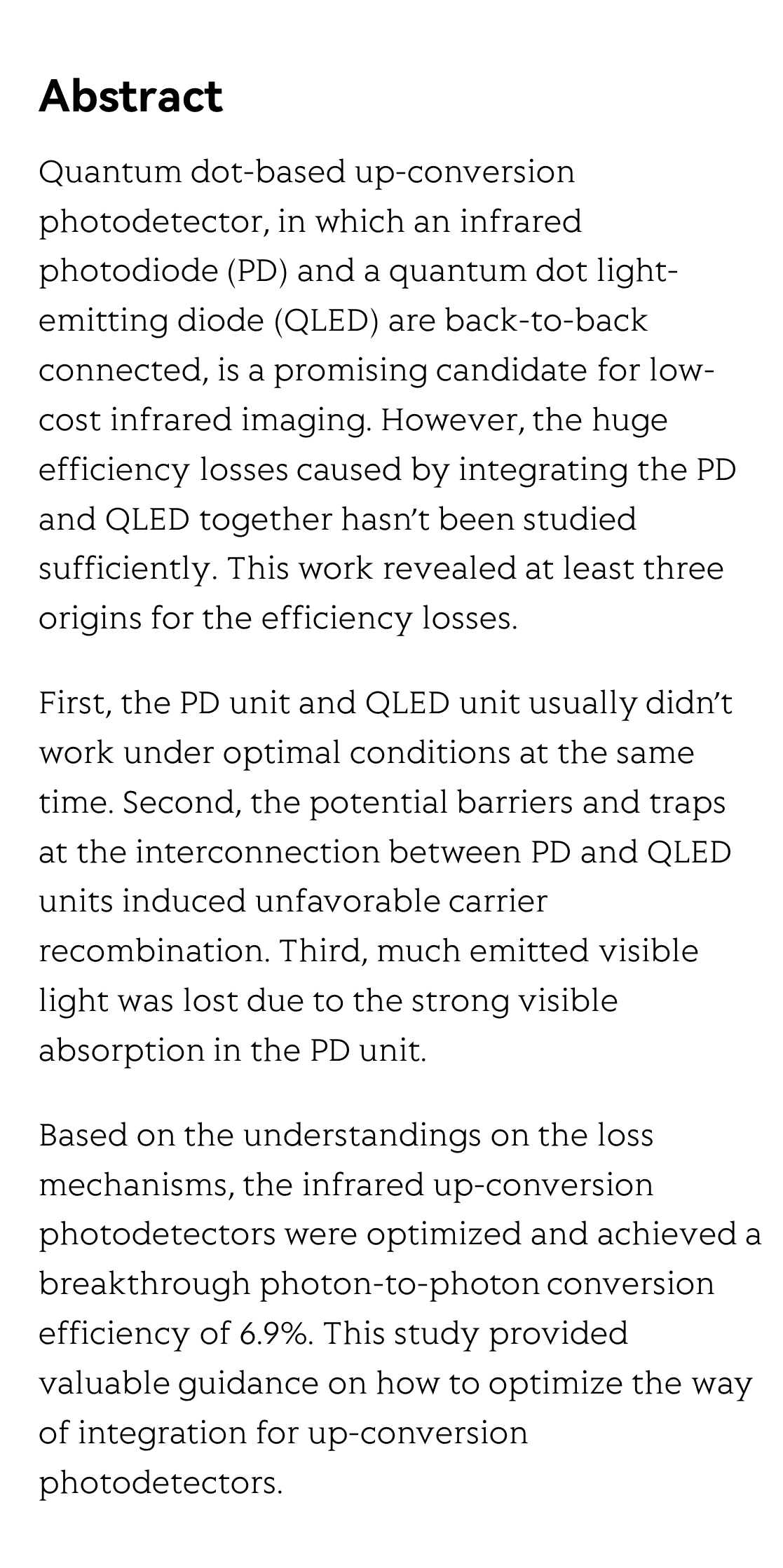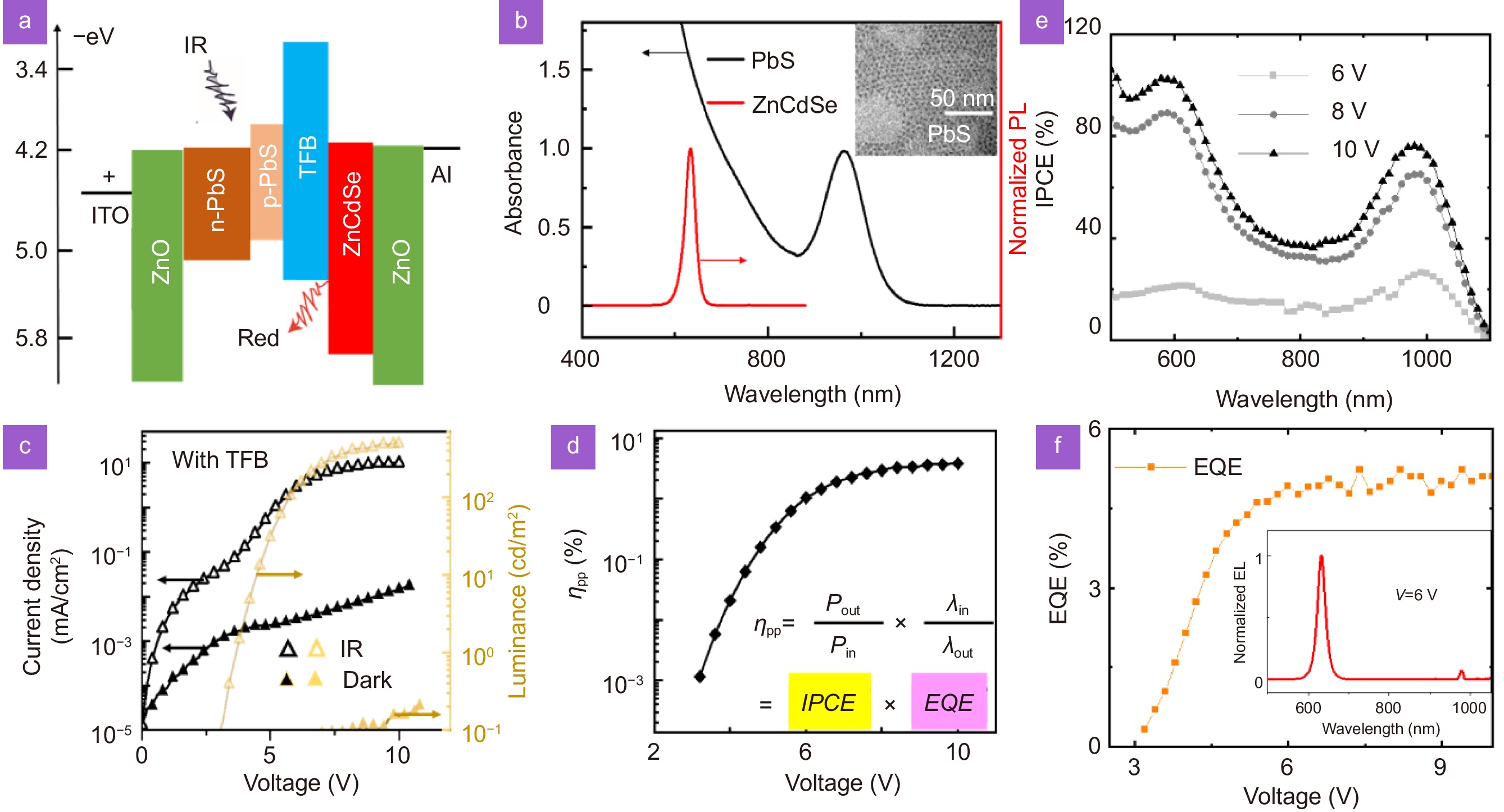Unraveling the efficiency losses and improving methods in quantum dot-based infrared up-conversion photodetectors
量子点红外上转换光电探测器效率损失的揭示及改进方法
量子ドット赤外アップコンバージョン光検出器の効率損失の開示及び改善方法
양자점 적외선 변환 광전 탐지기 효율 손실의 제시 및 개선 방법
Revelación y mejora de la pérdida de eficiencia del Fotodetector de conversión infrarroja de puntos cuánticos
Méthodes de révélation et d'amélioration de la perte d'efficacité des photodétecteurs convertis dans l'infrarouge à points quantiques
Выявление и улучшение потери эффективности фотоэлектрических детекторов с преобразованием квантовых точек в инфракрасном диапазоне
量子ドット赤外アップコンバージョン光検出器の効率損失の開示及び改善方法
양자점 적외선 변환 광전 탐지기 효율 손실의 제시 및 개선 방법
Revelación y mejora de la pérdida de eficiencia del Fotodetector de conversión infrarroja de puntos cuánticos
Méthodes de révélation et d'amélioration de la perte d'efficacité des photodétecteurs convertis dans l'infrarouge à points quantiques
Выявление и улучшение потери эффективности фотоэлектрических детекторов с преобразованием квантовых точек в инфракрасном диапазоне



Reviews and Discussions
